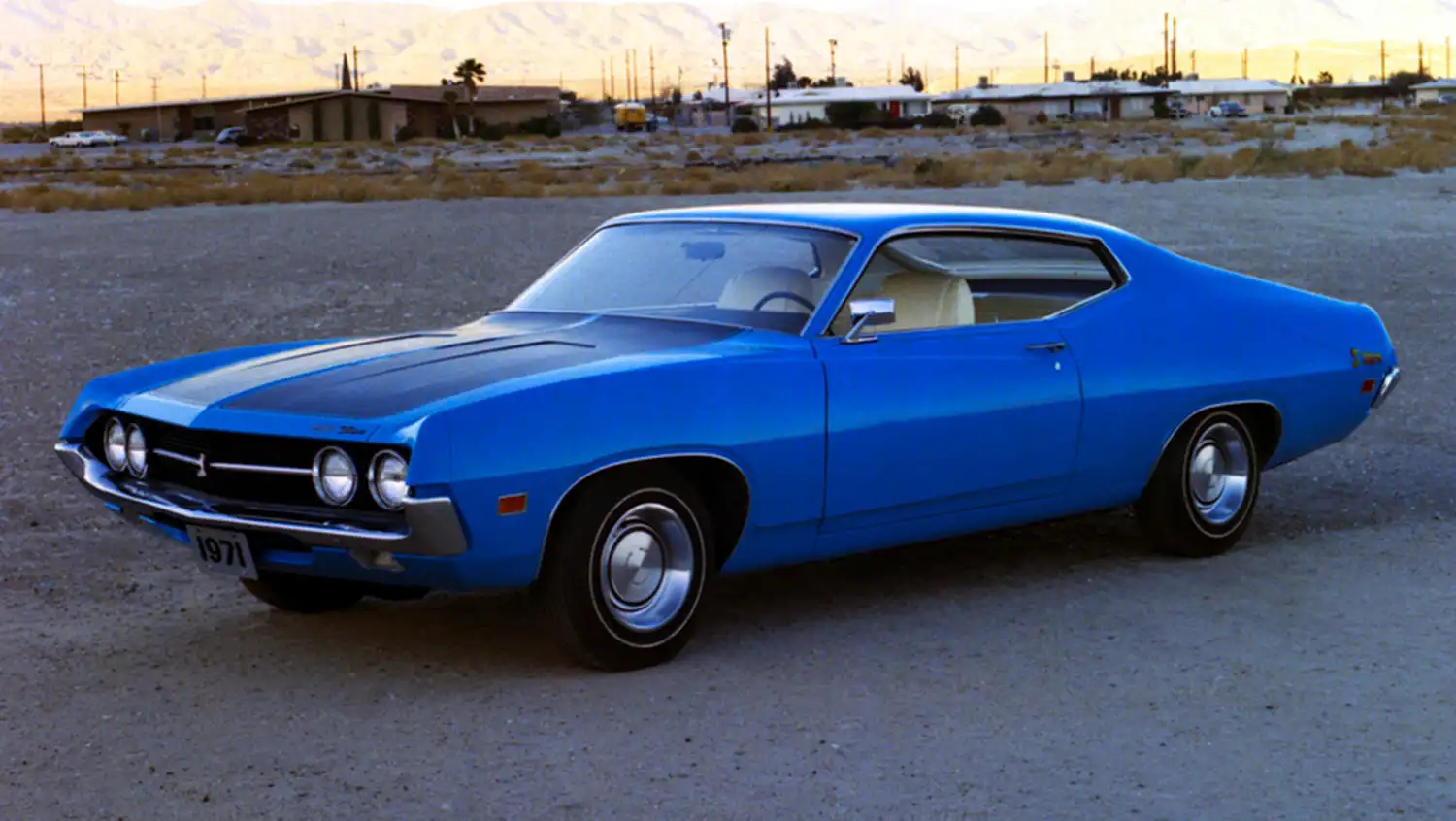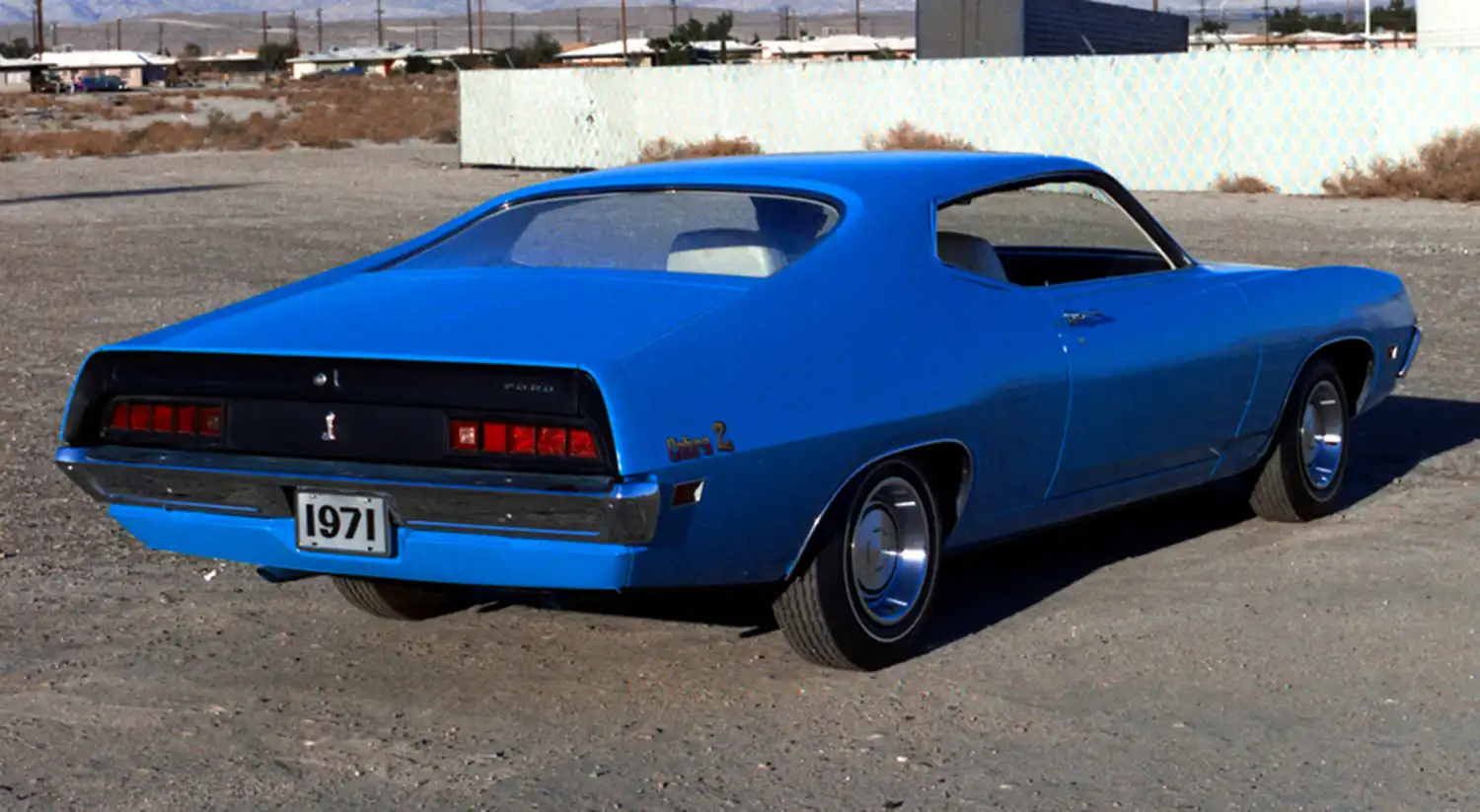
The 1971 Ford Torino Cobra represents a bold and muscular evolution of Ford’s performance lineup. As the second-generation Torino reached its peak in styling and power, the Cobra badge became synonymous with raw strength and track-ready handling. The 1971 model year marked the final high point before regulations began reshaping the muscle car scene.
The Redefined 1971 Ford Torino Cobra Design
For 1971, Ford pushed the Torino’s design in a more sculpted, aggressive direction. The fastback coupe, with its long hood and sloped rear deck, featured bold “coke-bottle” contours that reflected the era’s obsession with speed and style. Cobra models stood out with a blacked-out grille, hood pins, and optional racing stripes.
A competition suspension gave the Cobra a lowered stance, making it look as fast as it felt. Minimal chrome and aggressive lines highlighted its muscle car identity. The integrated rear deck spoiler and side graphics elevated its visual drama.
Driver-Focused Interior with Performance Intent
Inside, the Torino Cobra kept its purpose clear. High-back bucket seats and a sporty black interior created a performance cockpit. The optional center console housed a Hurst T-handle shifter, reinforcing the car’s performance intent.
Gauges for speed, RPM, oil pressure, and fuel level gave drivers everything they needed at a glance. A rim-blow steering wheel and available sound system added comfort, but the priority remained performance and control.
1971 Ford Torino Cobra V8 Power and Performance
Under the hood, the Cobra delivered serious muscle. The standard 429 cubic inch Cobra Jet V8 offered around 370 horsepower (gross), delivering strong acceleration and a deep exhaust note that defined the breed. For those wanting more, the optional 429 Super Cobra Jet pushed performance even further.
The SCJ included a Holley 780 CFM carburetor, solid lifter camshaft, and performance internals. Though officially rated similarly for insurance reasons, real-world performance suggested even more potent output. Buyers could choose a four-speed manual or a three-speed automatic, and most models featured a Traction-Lok rear differential.
This combination turned the 1971 Torino Cobra into a true competitor on both street and strip, capable of 0–60 mph in under six seconds and a top speed approaching 130 mph.
Standard Competition Suspension for Control
Power was only part of the equation. Ford equipped the Cobra with a competition suspension system, including heavy-duty springs, shocks, and sway bars. This setup improved handling and body control during spirited driving.
Lower ride height enhanced the Cobra’s aggressive stance while reducing body roll. While many muscle cars focused solely on straight-line speed, the Torino Cobra proved it could corner with confidence too.
A Classic with Lasting Collectibility
The 1971 Torino Cobra hit the market just before tightening emissions and rising insurance rates changed the muscle car landscape. As a result, it stands as one of the last truly unfiltered muscle machines of its kind.
Limited production numbers, especially for SCJ-equipped models, boost its value among collectors today. Well-preserved examples are prized for their power, design, and rarity. It’s a model that defines the early ‘70s muscle era with confidence and charisma.
Summary
The 1971 Ford Torino Cobra brought together aggressive design, a powerful 429 V8 engine, and serious suspension upgrades. As a muscle car icon, it blended bold style and real-world performance into a package that still turns heads. From its sculpted body to its driver-focused cabin, the Cobra remains a legend of American performance history.
Disclaimer: This article is intended for general informational purposes only. Specifications and availability may vary; always verify with trusted sources.
Source: Ford Heritage Vault
